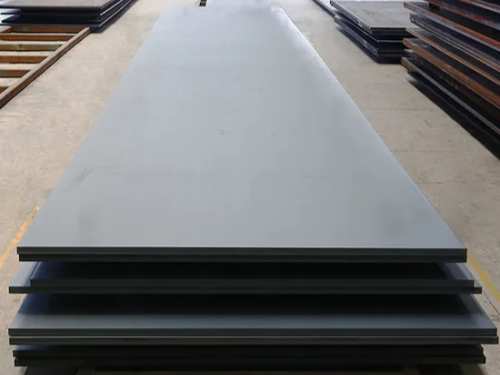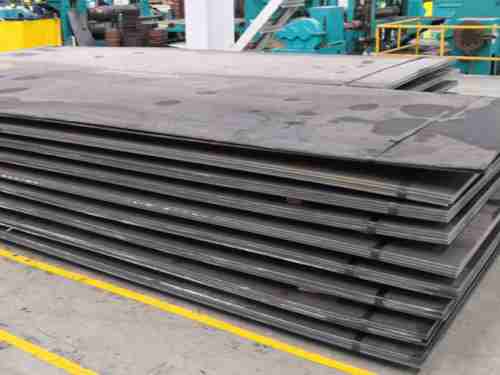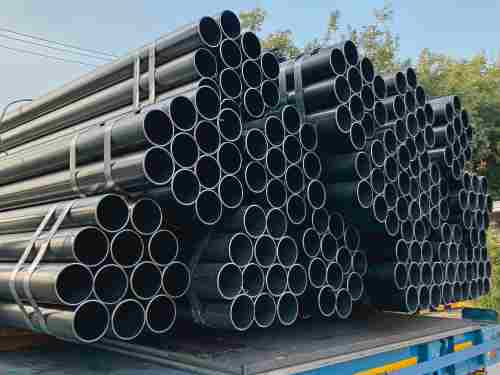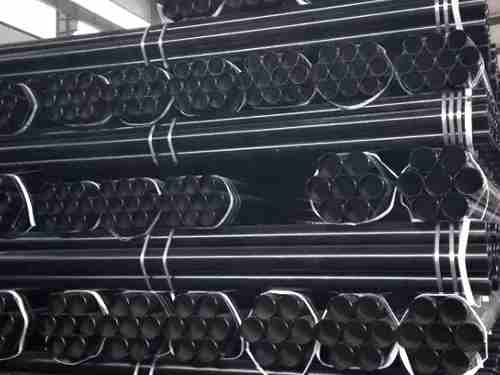In the production of stainless steel welded pipes, there is a very important process, that is, solution treatment. Solution treatment is a heat treatment process in which the alloy is heated to a high temperature and maintained at a constant temperature in one heating. In the phase region, the excess phase is completely dissolved into the solid solution, which is then rapidly cooled to obtain a solid solution. So, why should the stainless steel welded pipe be solution treated, and what is its function?
The stainless steel welded pipe is softened by solution treatment. Generally, the stainless steel welded pipe is heated to about 950~1150℃ for a period of time, so that the carbides and various alloy elements are fully and uniformly dissolved in the austenite. Carbon and other alloying elements can then be rapidly quenched and cooled. It has the following three functions:
(1) The structure and composition of the welded steel pipe are uniform, which is particularly important for raw materials, because the rolling temperature and cooling rate of each section of the hot-rolled wire rod are different, resulting in inconsistent structure. At high temperature, activated carbon atoms increase, phase dissolves, and the chemical composition tends to be uniform. After rapid cooling, a uniform single-phase structure is obtained.
(2) Eliminate work hardening, which is conducive to continued cold working. Through solution treatment, torsional lattice recovery, elongation and broken crystal recrystallization can eliminate internal stress, reduce the tensile strength of the steel pipe, and increase the elongation.
(3) Restore the inherent corrosion resistance of stainless steel welding. The corrosion resistance of stainless steel is reduced due to carbide precipitation and lattice defects caused by cold working, and the corrosion resistance of stainless steel welded pipes returns to a good state after cold working. Solution processing.
After the stainless steel welded pipe undergoes solution treatment, its performance in all aspects can reach the state, so the solution treatment of the stainless steel welded pipe is very important.
What are the disadvantages of solution treatment of stainless steel welded pipes
All cold working of stainless steel, such as welding, brings unavoidable damage to the properties of stainless steel pipes, especially corrosion resistance or heat resistance. Stainless steel, especially austenitic stainless steel, has excellent plasticity, and it is easy to realize cold working methods such as cold drawing, cold rolling, cold rolling, cold bending, cold expansion, and cold twisting. The solution treatment is not carried out, and the details are as follows.
1. It will lead to the increase of microscopic defects such as lattice dislocation and surface roughness, and induce martensitic transformation and carbide precipitation. For example, austenitic steels exhibit an increase in magnetic phenomena during cold working.
2. If lattice dislocation or phase transformation occurs on the surface of the material, it will become the starting point of local corrosion such as pore erosion. This phenomenon has a direct adverse effect when the degree of deformation reaches 20% minus the section ratio.
3. Residual stress will be left in the material after cold working, which is extremely detrimental to the stress corrosion cracking (SCC) resistance of the material. Any degree of cold working increases the susceptibility of the material to SCC.
4. The degree of cold working of austenitic stainless steel has a negative impact on high temperature durability. Generally, the higher the working temperature or the higher the fracture life requirement, the lower the allowable cold work degree.
5. For stainless steel pipes with alternating loads, cold working will increase its cracking and expansion rate due to the reduction of elongation and residual elongation, which will have adverse effects.
In summary, stainless steel welded pipes must be welded and polished to ensure corrosion resistance and prevent the precipitation of austenitic carbides.

 English
English Español
Español











